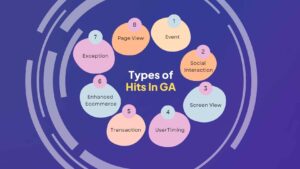Businesses thrive on data today. Whether it’s tracking user behavior, monitoring website performance, or identifying trends, data holds the key to making informed business decisions. Enter web analytics—the backbone of data-driven decision-making. It’s no wonder that web analytics roles are booming in the job market. If you’re aspiring to enter the field, mastering web analytics interview questions is crucial.
With web analytics professionals becoming increasingly important, businesses are constantly looking for skilled individuals who can help them make sense of the vast amounts of data generated online. But what exactly do these professionals do, and why are they in such high demand?
What Is Web Analytics and Why Is It Important?
Web analytics professionals track and analyze data from websites, mobile apps, and other digital platforms. They use this data to identify patterns, optimize user experiences, and drive business decisions that can enhance conversions, engagement, and overall performance. Their work involves tools like Google Analytics, Adobe Analytics, and other software to measure metrics such as website traffic, bounce rates, and conversion rates.
As companies realize the importance of a strong online presence, the demand for web analytics experts is skyrocketing. But getting into the field requires preparation, particularly when it comes to acing interviews. Below, we’ve compiled a comprehensive list of 30 Web Analytics Interview Questions divided into three categories—fresher, intermediate, and advanced—to help you get ready.
Fresher Web Analytics Interview Questions
If you’re new to web analytics, interviewers will likely focus on foundational knowledge. Here are some key questions you might face, along with sample answers:
1. What is web analytics?
Web analytics refers to the process of collecting, measuring, and analyzing data from websites to understand user behavior and improve performance. The main goal is to gain insights into how visitors interact with a site and make informed decisions that can enhance the user experience and increase conversions.
2. Why is web analytics important for businesses?
Web analytics helps businesses understand user behavior, optimize marketing efforts, and improve website performance. With data-driven insights, businesses can make informed decisions, boost conversions, and achieve higher ROI from their online strategies.
3. What are the key metrics tracked in web analytics?
Common metrics include:
- Pageviews: The total number of pages viewed.
- Bounce Rate: The percentage of users who leave after viewing one page.
- Average Session Duration: The average time users spend on the site.
- Conversion Rate: The percentage of visitors who complete a desired action.
4. What is the difference between sessions and pageviews?
A session refers to the entire duration a user spends on a website, which may include multiple interactions (e.g., pageviews, clicks, form submissions). A pageview is recorded every time a page is loaded or reloaded.
5. What is bounce rate, and why is it important?
Bounce rate refers to the percentage of users who visit a website and leave without interacting with any other page. A high bounce rate could indicate issues with user experience or irrelevant content.
6. What are the key tools used in web analytics?
Popular web analytics tools include:
7. What is a conversion in web analytics?
A conversion happens when a visitor completes a specific goal on the website, such as making a purchase, signing up for a newsletter, or filling out a contact form.
8. What are UTM parameters, and why are they used?
UTM parameters are tags added to URLs that help track the source, medium, and campaign of traffic coming to your website. They’re vital for understanding where your website traffic is coming from and which marketing efforts are driving the most results.
9. What is A/B testing in web analytics?
A/B testing is a method used to compare two versions of a web page or app to see which performs better in terms of conversions or other metrics. It involves showing half of your audience one version (A) and the other half a slightly different version (B) and analyzing the results.
10. How do you define and track KPIs in web analytics?
Key Performance Indicators (KPIs) are specific metrics that help measure the success of a website or marketing campaign. KPIs should align with the business goals and could include metrics such as conversion rate, customer acquisition cost (CAC), and return on investment (ROI).
Also read: Research Analyst Interview Questions
Intermediate Web Analytics Interview Questions
For candidates with some experience in web analytics, interviewers may dive into more technical aspects, focusing on your ability to analyze and interpret data effectively.
11. What is the difference between Google Analytics and Adobe Analytics?
Google Analytics is widely used, free, and ideal for small to medium businesses. It offers robust tracking and reporting capabilities. Adobe Analytics, on the other hand, is more complex and geared toward large enterprises. It provides advanced tracking, segmentation, and reporting features but comes at a higher cost.
12. What is cohort analysis in web analytics?
Cohort analysis examines the behavior of a group of users who share a common characteristic over time. It allows businesses to track how different cohorts engage with the website or product and measure metrics like retention rate and lifetime value.
13. How do you calculate the conversion rate?
Conversion rate is calculated by dividing the number of conversions by the total number of visitors and multiplying by 100.
Formula: Conversion Rate = (Conversions / Total Visitors) × 100
14. Explain the term ‘multi-channel funnel’ in Google Analytics.
A multi-channel funnel is a report in Google Analytics that shows how different marketing channels (like organic search, paid ads, and email campaigns) work together to drive conversions. It helps businesses understand the customer journey across multiple touchpoints.
15. What is the purpose of setting up goals in web analytics?
Goals in web analytics help track specific user actions that are valuable to the business, such as form submissions, product purchases, or sign-ups. They provide insights into how well the website is achieving its objectives.
16. What is a ‘hit’ in Google Analytics?
A hit refers to an interaction that sends data to Google Analytics. There are several types of hits, including pageview hits, event hits, transaction hits, and social interaction hits.

17. What are segments in web analytics, and why are they used?
Segments are subsets of data that allow you to isolate and analyze specific groups of visitors. For example, you can create a segment for new users, returning users, or users from a specific country. Segmentation helps in understanding different user behaviors and optimizing accordingly.
18. What is funnel visualization in web analytics?
Funnel visualization is a way to map out the steps that users take to complete a specific goal, such as a purchase. It helps identify where users drop off in the process and provides insights into improving conversion rates.
19. How do you handle bot traffic in web analytics reports?
To minimize bot traffic in web analytics reports, you can:
- Use filters to exclude known bots and spiders.
- Set up IP exclusions for internal traffic.
- Monitor suspicious spikes in traffic and adjust accordingly.
20. How would you optimize a website based on web analytics data?
Website optimization can involve multiple strategies:
- Improving load times for better user experience.
- A/B testing different versions of pages.
- Reducing bounce rates by improving content relevance.
- Enhancing conversion rates by simplifying checkout processes.
Also read: 40 Google Analytics Interview Questions: Beginner to Advanced Level
Advanced Web Analytics Interview Questions
For senior-level or specialized roles, interviewers often ask more technical and strategic questions. These questions are designed to assess your ability to implement advanced analytics strategies and extract actionable insights.
21. What is attribution modeling in web analytics?
Attribution modeling is the process of assigning credit to various marketing channels that contribute to a conversion. Common models include last-click attribution, first-click attribution, and linear attribution. It helps marketers understand which channels are most effective at driving conversions.
22. What is tag management, and why is it important in web analytics?
Tag management involves using a tag management system (TMS) like Google Tag Manager to efficiently manage tracking codes (tags) across your website. It allows for easier deployment and management of tracking codes without needing to modify website code directly.
23. How do you track user interactions across multiple devices?
Cross-device tracking can be done using user IDs or cookies. User IDs allow you to track users across different devices by assigning a unique identifier to each user, while cookies track users on a single device.
24. What is predictive analytics, and how is it used in web analytics?
Predictive analytics involves using historical data to predict future trends and behaviors. In web analytics, predictive models can forecast user behaviors, conversion likelihood, and churn rates, enabling businesses to take proactive actions.
25. How can machine learning be applied in web analytics?
Machine learning can be applied to web analytics in several ways:
- Predicting customer behavior and churn.
- Personalizing user experiences.
- Automating data analysis for faster insights.
26. What are custom dimensions and metrics in Google Analytics?
Custom dimensions and metrics allow you to collect data not available in standard reports. Custom dimensions are user-defined attributes (e.g., logged-in status), while custom metrics are quantitative measurements (e.g., number of times a video was watched).
27. How do you handle discrepancies in web analytics data?
Discrepancies in web analytics data can arise from:
- Sampling differences in reports.
- Time zone settings.
- Filters or segmenting techniques.
- Misconfigured tracking codes. It’s crucial to validate data and align all settings to minimize discrepancies.
28. Explain how you would conduct a cohort analysis.
To conduct a cohort analysis:
- Define your cohort (e.g., users who signed up in a specific month).
- Measure behavior over time (e.g., retention, conversions).
- Analyze the results and identify trends, such as increased churn or improved engagement over time.
29. What is real-time analytics, and how is it useful?
Real-time analytics provides instant insights into how users are interacting with your website at any given moment. It is useful for monitoring the performance of live campaigns, identifying technical issues, and making immediate adjustments based on user behavior.
30. How do you ensure data accuracy in web analytics?
Ensuring data accuracy requires:
- Regular audits of tracking codes.
- Verifying that goals, events, and filters are properly set up.
- Minimizing bot traffic and spam.
- Cross-checking data with other sources like CRM systems or sales data.
Quick Tips for Preparing for a Web Analytics Interview
- Know the Tools: Familiarize yourself with web analytics platforms, especially Google Analytics and Adobe Analytics.
- Understand the Metrics: Be able to explain key metrics like bounce rate, session duration, and conversion rate.
- Stay Updated: Web analytics is always evolving. Stay updated on the latest tools, techniques, and best practices.
- Practice Data Analysis: Review case studies or data sets to practice extracting insights.
- Prepare for Behavioral Questions: In addition to technical questions, be ready to explain how you’ve used data to drive business decisions.
Conclusion
Web analytics is a dynamic and essential field that helps businesses make data-driven decisions. Preparing for your interview by mastering these 30 web analytics interview questions will give you the confidence and knowledge you need to land your dream job. Whether you’re a fresher, an intermediate, or an advanced candidate, the demand for skilled web analytics professionals is growing, and the opportunities are plentiful!
